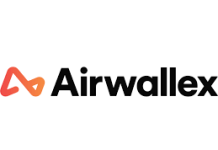A representative for Seeking Alpha disclosed plans to transition Waze’s current advertising system to Google Ads technology, aiming to enhance the experience for Waze advertisers. This strategic shift involves reducing the complexities associated with monetizing Waze Ads, alongside offering support to affected employees in accordance with local regulations.
The decision to integrate Waze and Maps mapping teams was announced in December 2022, citing financial considerations. As reported by The Wall Street Journal (WSJ) on December 8, Google intended to merge the workforce of over 500 Waze personnel with Geo, the division overseeing Maps, Google Earth, and Street View. Despite the consolidation, assurances were made regarding the absence of layoffs during this restructuring phase.
Approximately six months earlier, Alphabet, Google’s parent company, disclosed plans to eliminate 12,000 positions across various product categories, departments, and geographic regions. CEO Sundar Pichai communicated this decision to staff members on January 20, attributing it to the need to align with evolving economic conditions. Pichai emphasized the necessity of adapting to fluctuating growth patterns observed over the preceding years.
The recent layoffs primarily target responsibilities associated with Waze Ads monetization, driven by Google’s observation of inconsistent advertising outcomes. Philipp Schindler, Google’s senior vice president and chief business officer, reported a modest 2% year-over-year increase in “search and other” revenue within Google Advertising in April. This growth was primarily fueled by expansions in the travel and retail sectors.
Google’s decision to streamline Waze’s advertising system reflects broader efforts to optimize operational efficiency and align business strategies with evolving market dynamics. By leveraging Google Ads technology, Waze advertisers can expect a smoother and more integrated advertising experience, facilitating enhanced engagement with target audiences.
The integration of Waze and Maps teams underscores Google’s commitment to maximizing synergies across its diverse portfolio of mapping services. By consolidating resources and expertise, Google aims to enhance the functionality and user experience of its mapping platforms, ultimately delivering greater value to consumers and advertisers alike.
While workforce restructuring initiatives may necessitate difficult decisions, Google remains committed to supporting affected employees through mobility assistance and severance options. This approach aligns with the company’s broader commitment to corporate responsibility and employee welfare.
Looking ahead, Google continues to adapt its advertising strategies to capitalize on emerging opportunities and address evolving market challenges. By prioritizing innovation and customer-centricity, Google remains well-positioned to maintain its leadership in the digital advertising landscape while driving sustainable growth and value creation for stakeholders.











